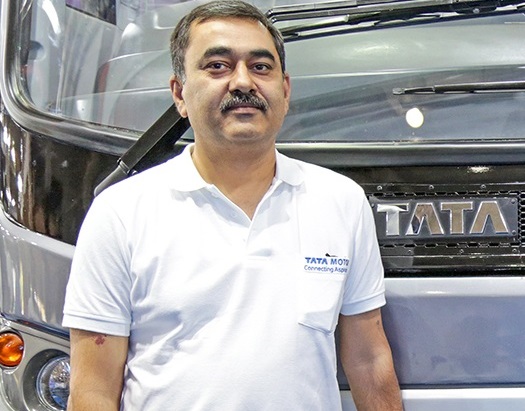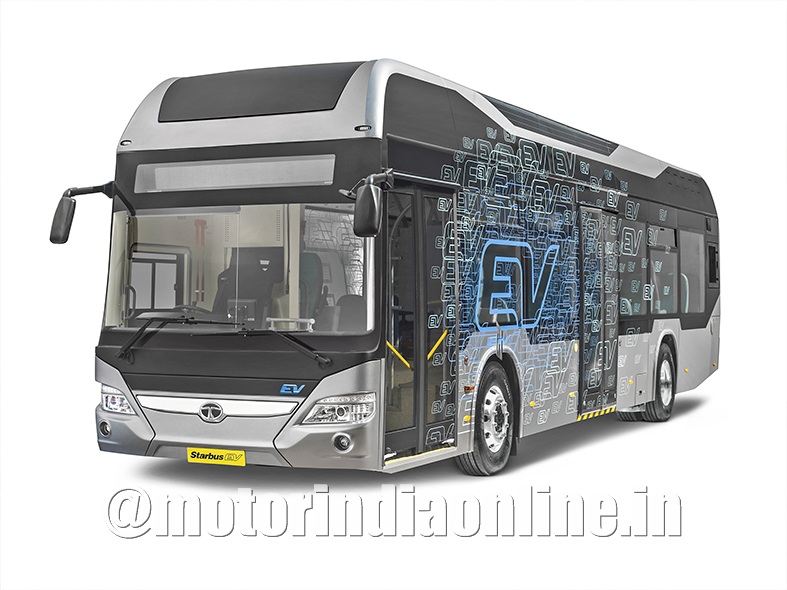Leader in the domestic CV market Tata Motors has been on a bull run in the EV space, bagging a major chunk of the orders for electric buses under the Government’s FAME 1 Scheme. With e-mobility being the talk of the town, OEMs like Tata Motors are walking the talk by delivering buses to STUs and driving the change in technology in different states across the country.

We find out more on the company’s e-mobility drive from Mr. Rohit Srivastava, Product Line Head – Passenger Commercial Vehicles, Tata Motors.
Excerpts:
In which States/locations are Tata Motors e-buses currently running in the country? Do you also have trial runs going on at any locations?
Tata Motors has developed electric buses ahead of all domestic OEMs and has won orders under FAME 1 initiative from Guwahati, Indore, Jammu, Jaipur, Kolkata and Lucknow, for supplying 255 electric buses which makes to 62% of the total buses order.
We have already initiated supplies to Kolkata, Indore and Lucknow and the rest are in process of getting necessary approvals to initiate the supplies. We are also offering buses to other STUs for trials.
How has the performance of your e-buses been until now – in terms of cost per km, reduction in pollution, etc.?
The performance of the buses has been very good, particularly in terms of energy efficiency which gives overall reduction in cost per km. We are very sure that the introduction of more and more electric buses will result in reduction of pollution load in the congested areas of our metropolis as well as eco-sensitive zones.
How have your managed to address the key challenge of charging infrastructure? If there’s a solution that works well, is charging a challenge at all moving forward? (at least from the standpoint of a closed loop, city bus operation?)
Charging infrastructure continues to remain a challenge. However, the degree of difficulty is lower when it comes to closed loop. The added challenge here is the trade-off between cost, battery capacity, range and charging breaks. Quality or power available will have to be looked at. However, we have planned to support the STUs from where we have received the order for buses, in terms of planning and establishing the infrastructure and we are confident and hopeful to overcome any issue.
What has the feedback been from the stakeholders using the electric buses – the STUs, drivers who drive these vehicles and the passengers who use them for commute?
We believe that the EV space will emerge gradually, as the customers start experiencing EV products and more importantly their inherent benefits of zero emission and lower operating costs. One of the inherent advantages of EV powertrain is the automatic transmission by default and lower NVH which is definitely going to be welcome both by drivers and passengers.
We at Tata Motors have identified sustainable transportation as one of the core elements of our company strategy, in line with the Sustainable Mobility Vision outlined by the Indian Government.
How are the subsidies from the Government under the FAME Scheme coming along? Are they really driving adoption of e-mobility in mass public transportation?
The sale of EV buses is today heavily dependent on Government incentives. Tata Motors is working with all potential customers, to make the EV initiative a grand success.
What we really look forward to is irrevocable policy and clear targets for the introduction of electric buses, particularly for city operation. In order to drive this, there is need for a mandate for certain types of buses to be electric.
Another support we are seeking from the authorities is in terms of standardization of the bus specifications and tender conditions between the various tendering bodies. The same will help in energizing the supply chain faster and optimize cost for the industry.
High degree of localization including the energy storage space is an imperative for electric vehicles in India to secure sustained growth, low dependency on import and local employment generation. We will continue to support the Government’s initiatives on electrification and will participate for the FAME II Scheme as well once it is announced.
